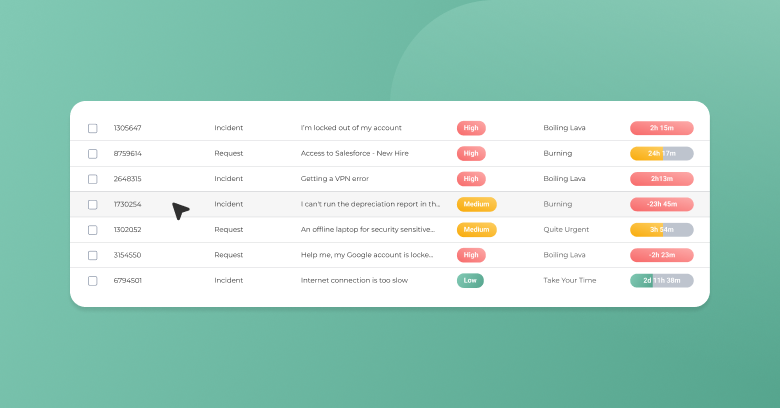What Does the Word Service Mean to You?

In light of the global pandemic of 2020-21, many organizations have accelerated their digital transformation initiatives – through the use of enterprise service management. And they are, I’m sure, fully aware of what enterprise service management is. But what about what service is? Think about it.
Service. For such a simple word it sure can mean a lot of different things to different people. For sports fans, a good service is a critical part of tennis success. For the religious, a service is a ceremony of worship. For the military, it’s their employment, i.e. military service. And in other vocations it’s the length of time that they have stayed with that particular employer.
For lawyers, service is the formal delivery of legal documents such as a summons. For homeowners, it can be a utility such as gas, electricity, or water. For car owners, it’s the annual maintenance of their vehicle. And (you can tell I’m running out of steam here), it could even be a set of matching crockery of all things.
So, service can mean different things to different people. And service in the context of the corporate IT organization is no different.
So, what should the word “service” mean to IT?
For those that work in the IT organization, service can mean multiple things. For some, service relates to technology domains like network or storage services. For others, particularly those schooled in IT service management (ITSM) and ITIL, it relates to an IT service, i.e. something that is consumed by an end user. Or some might view service as the S in SOA (service-oriented architecture).
But for me, even in my role as SysAid CEO, it relates to the service element of service delivery and customer service. And while we deliver a set of products and services to our customers:
- Technology, in both product and service forms
- Professional services, although most customers don’t need much of this
- Support services
We do all this with a focus on great service – that’s customer service and the service experience (what is commonly called the customer experience or CX). But where do internal IT organizations stand when it comes to customer service or the service experience?
Customer service and the service experience
English isn’t my first language so I’ll avoid the use of terms such as verbs and nouns, and other stuff that will get me into trouble with the social grammar police. Instead I prefer to think of this in terms of the what and the how. The internal IT organization needs to consider more than just the what when delivering its IT services, the how is just as, if not more, important.
I think it’s easier to look at this through a personal life lens than a workplace one, so think about your personal mobile phone if you have one. You might have a competitive tariff, a sexy handset, and a great service in terms of voice and mobile data. But you still might be unhappy with the service. In fact, you might have recently changed service provider or refused to go with a particular provider because of their service. And by this, I mean poor customer service, for example:
- The online or in-store staff might have been rude or disconnected from your customer needs as you tried to buy a new service or required post-sales support. Maybe they were too focused on the merits of the technology or their sales revenue numbers. In fact, you might have felt like a number rather than a customer thanks to their actions.
- You might have engaged in an online chat or called the service provider’s helpline only to find them less than helpful – 40 minutes in a queue before speaking to someone reading from a script that didn’t match your issue. We’ve probably all been there. And doesn’t it sound familiar to the corporate IT experience that’s sometimes experienced?
So, consider how you deliver your IT services in terms of the what AND the how
Your internal customers’ needs probably go way beyond the technology itself. In fact, their expectations of your IT team are likely driven by their consumer-world experiences – the great ones rather than the ones I referred to above. Scarily, they might also rate the quality of your IT services based more on their service experience (what is increasingly called the employee experience or EX) than on the IT services themselves. Just think back to the two examples I provided above.
So, how is your internal customer service, service experience, or employee experience?
Do you even think of your organization’s employees – what you might call end users – as your customers or care about their service experience?
And would you dance for them?
OK, that last question probably took it a little too far, but this might make you smile:
It might also make you think more about service. It’s time for internal IT organizations to think beyond the technology, and even to think beyond the IT services they deliver, it’s time to think about the service experience, or employee experience, provided to internal customers.
And this needs to be what’s considered most important by your employees rather than what your IT department believes to be a great employee experience.
For example, and especially given that the increase in remote working makes the access to working technology and services more critical to both personal productivity and business operations, employee expectations of the efficiency and effectiveness of IT support are higher than ever (and not simply because of better consumer-world experiences of service and support).
If you would like advice on how to improve your IT support team’s employee experience, please feel free to contact us.
Did you find this interesting?Share it with others:
Did you find this interesting? Share it with others:








